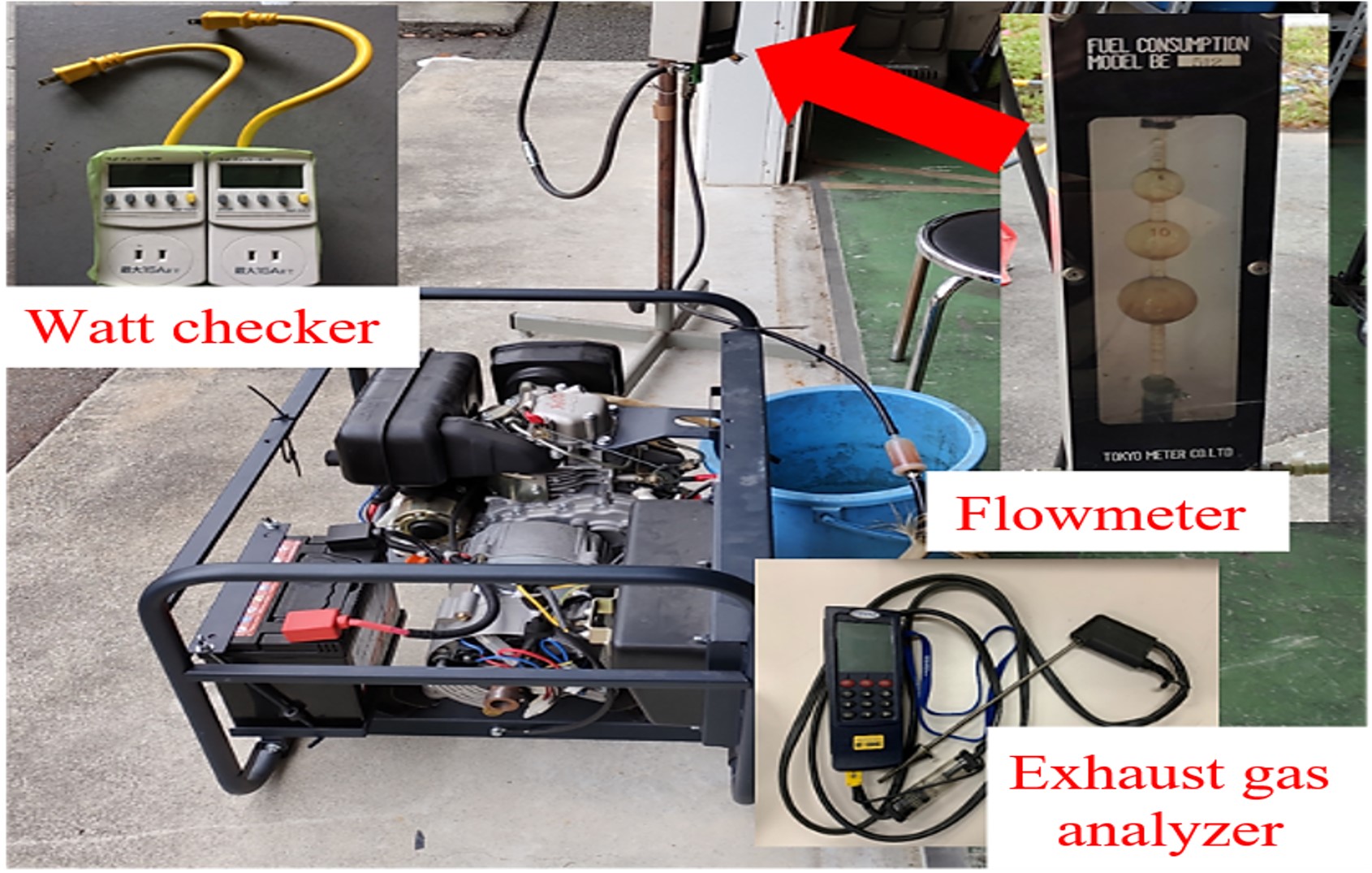Synthesis of BDF Based on Microwave Irradiation and Its Application
Main Article Content
Abstract
BDF (Bio-diesel Fuel) is expected to be an alternative fuel to diesel oil through methyl esterification. Currently, the alkaline catalyst such as sodium hydroxide is widely used to produce BDF. However, problems of complicated manufacturing process and large quantity of water needed for aftertreatment are faced. Therefore, the objective of this study is to propose a microwave irradiation method for synthesizing BDF based on the eggshells solid catalysts, by which BDF aftertreatment is not needed and water can be saved. In the experiment, firstly, eggshells were prepared to solid catalysts and characterized by SEM and X-ray Diffractometer. Secondly, BDF was synthesized by microwave irradiation and BDF yield ratios under several experimental conditions were quantitatively analysed by GCMS. Finally, exhaust gas concentration of using diesel oil and BDF as fuels for a wagon with a diesel engine was measured. As a result, it was found that BDF yield ratio under microwaves radiation could reached 99.58% and CO2 emission was lower for BDF than for diesel oil while NOx emission was lower for diesel oil than for BDF.
Article Details

This work is licensed under a Creative Commons Attribution-NonCommercial-ShareAlike 4.0 International License.
This work is licensed under a Creative Commons Attribution-NonCommercial-ShareAlike 4.0 International License.
References
National Institute for Environmental Studies. Greenhouse Gas Emissions in FY2020 [Internet]. 2020 [cited 2021 Dec 10]. Available from: https://www.env.go.jp/content/900518252.pdf. (In Japanese)
Global Warming Prevention Headquarters, NDC in Japan [Internet]. 2021 [cited 2021 Oct 22]. Available from: https://www.kantei.go.jp/jp/singi/ondanka/kaisai/dai48/pdf/ndc_kouken.pdf. (In Japanese)
Zhu N, Kuo M, Han CH. Biodiesel fuel (BDF) synthesis by using ion exchange resin based on ultrasonic irradiation and its application. IOP Conf Ser: Mater Sci Eng. 2020;886:012004.
Oshima K. Mechanism and Applications of Microwave Heating. J Japan Soc Colour Mater. 1971;44(1):27-35. (In Japanese)
Fukushima H. Microwave processing and applications to future automobile. Toyota Central R&D Labs. 2015;46(3):75-92.
Ikenaga K, Inoue T, Hamada A. Investigation of metal oxides for microwave preparation of bio diesel fuel. The 26th Annual Conference of Japan Society of Material Cycles and Waste Management; 2015 Sep 2-5; Kyushu University, Japan. p. 285-286. (In Japanese)
Yano T, Koda J. Minimization of washed wastewater volume in the refining process of biodiesel fuel. Proceedings of the Conference on Waste and Resources Recycling; 2013; Japan. p. 387 (In Japanese).
Kouzu M, Umemoto M, Kasuno T, Tajika M, Aihara Y, Sugimoto Y, Hidaka J. Biodiesel production from soybean oil using calcium oxide as a heterogeneous catalyst. J Jpn Inst Energy. 2006;85(2):135-141. (In Japanese)
Kawashima A, Yamamoto H, Tetsuya K. Development research of bio-diesel production process by using activated calcium oxide. Proceedings of the Annual Conference of the Japan Institute of Energy; 2004; Japan. p. 182-183. (In Japanese)
Ministry of Agriculture, Forestry and Fisheries. Results of the 2021 Survey on the Distribution of Chicken Eggs [Internet]. 2021 [cited 2022 Mar 22] https://www.maff.go.jp/j/tokei/kekka_gaiyou/tikusan_ryutu/keiran/ r3/index.html. (In Japanese)
Nabetani K, Hagiwara S. To produce and use biodiesel fuel in a truly meaningful way. Oleoscience. 2012;12(12):45-47. (In Japanese)
Kewpie Corporation. Social and environmental report [Internet]. 2018 [cited 2022 Mar 22]. Available form: https://www.kewpie.com/sustainability/pdf/kewpie_env2018_interactive.pdf. (In Japanese)
Asakuma Y, Ogawa Y, Maeda K, Fukui K, Kuramochi H. Effect of microwave irradiation on triglyceride transesterification: experimental and theoretical studies. Biochem Eng J. 2011;58-59:20-24.
Kiyonaga E. Basic research on technology to convert inedible vegetable oils and fats into fuels. Energia Research Institute Review. 2009;18:4-5. (In Japanese)



